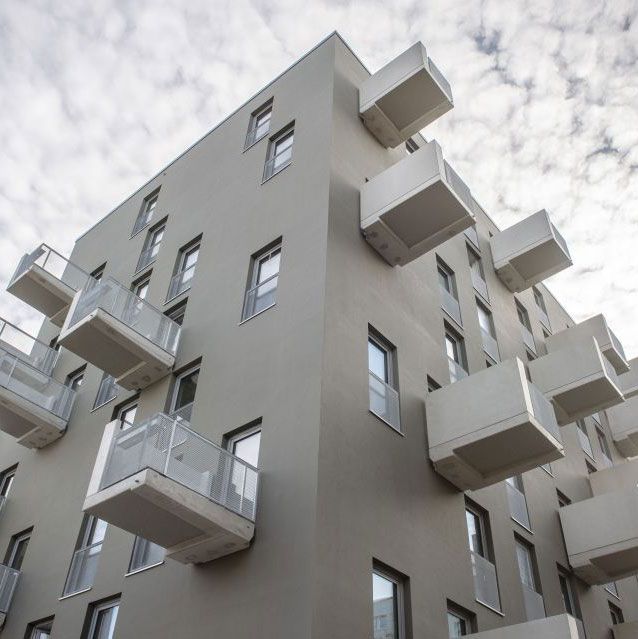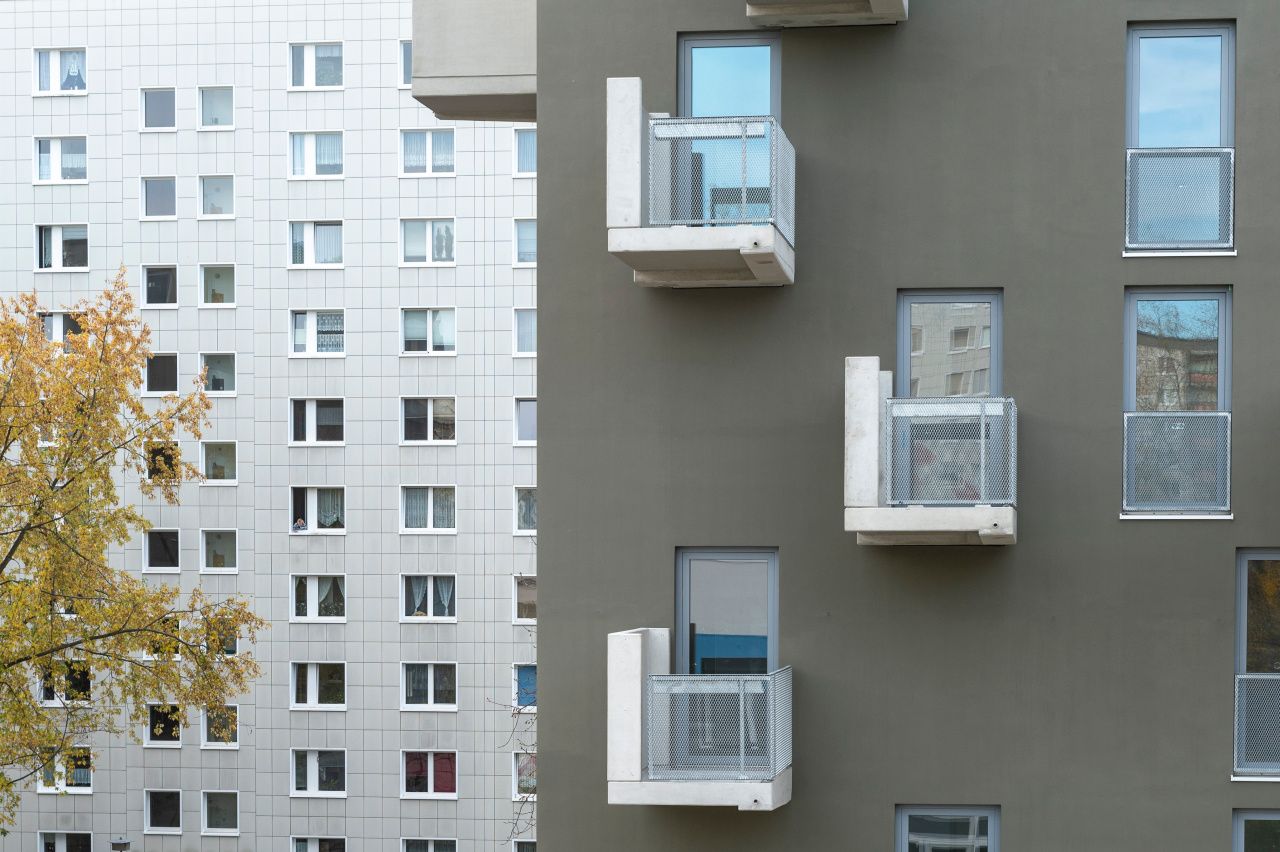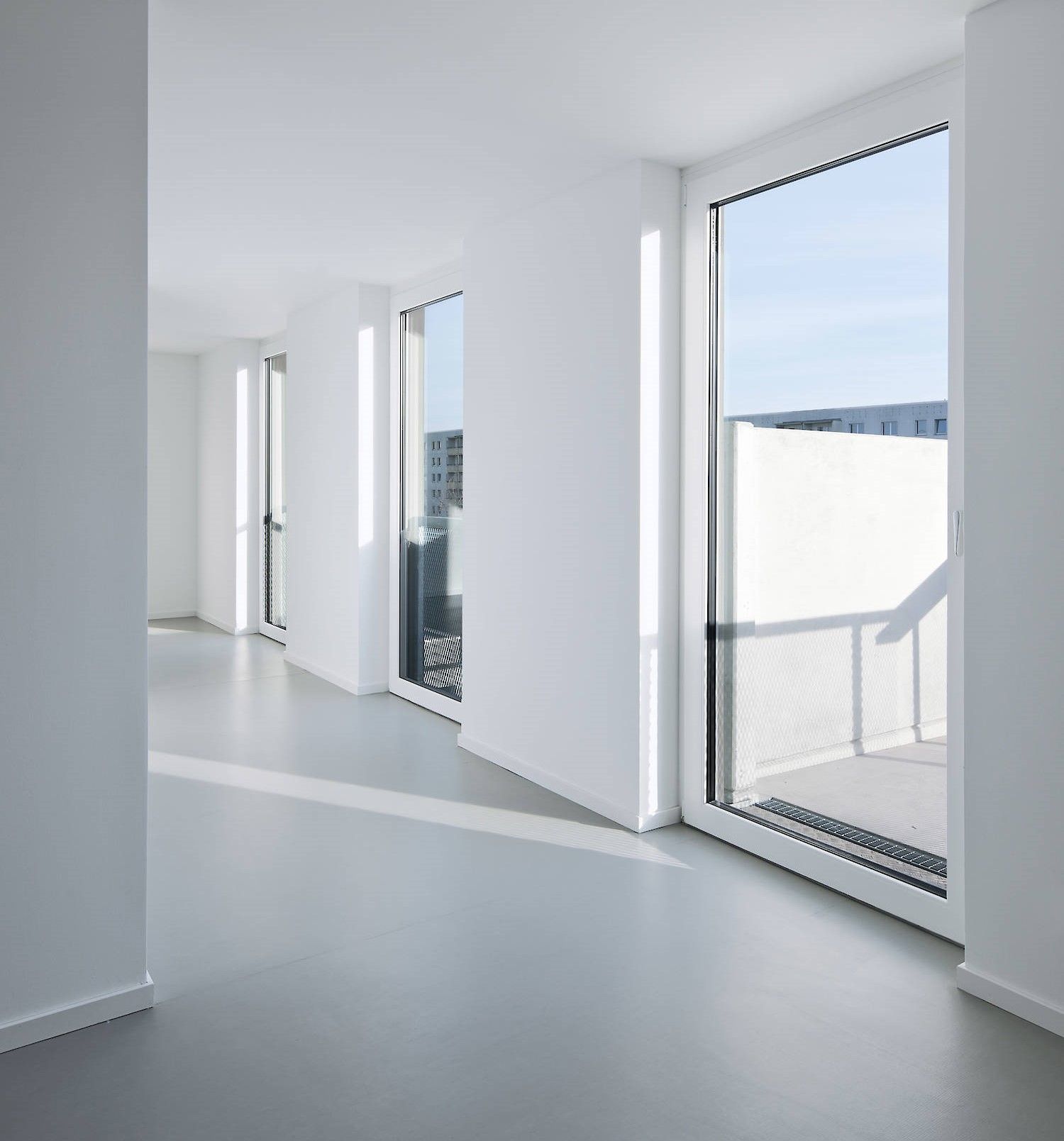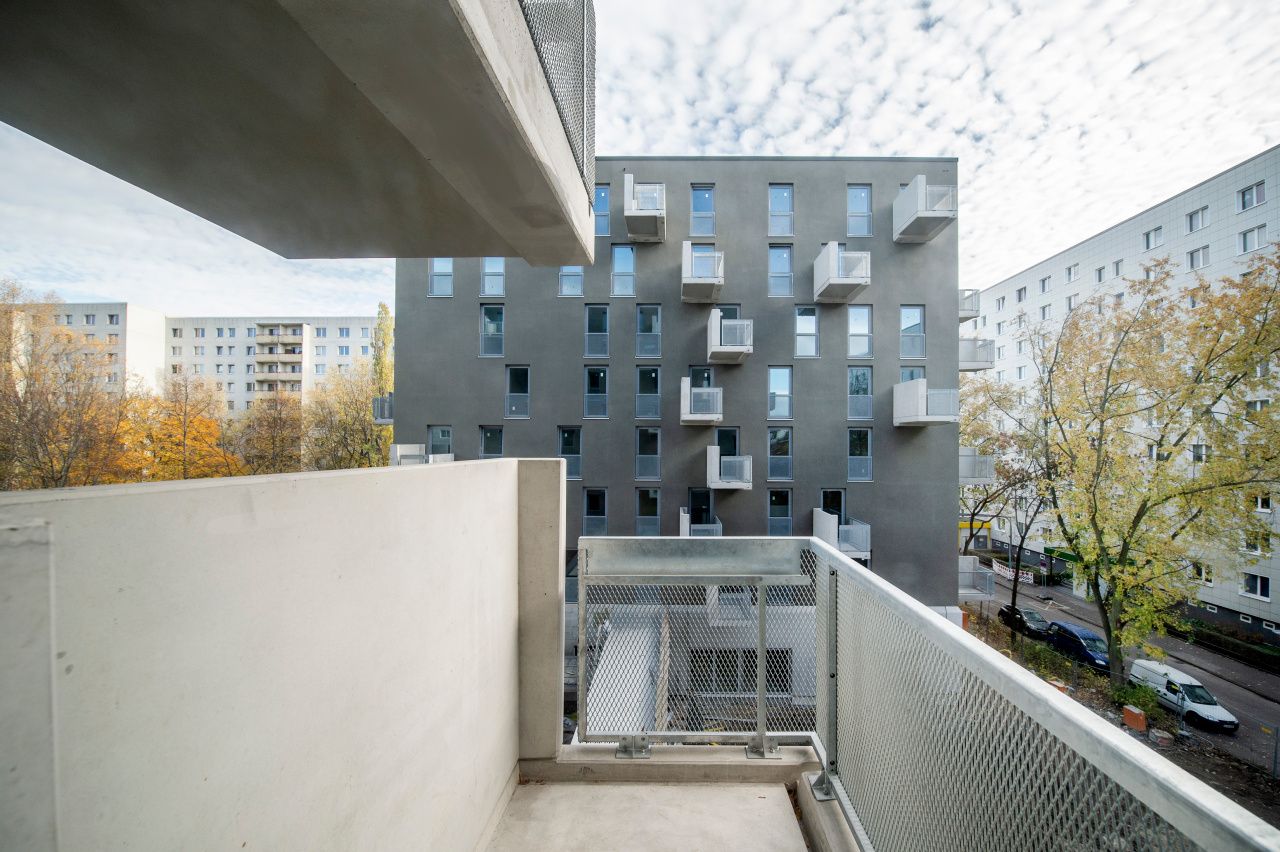Making optimal use of limited urban living space
Two eight-story apartment blocks in Berlin show how to successfully combine little building space and moderate rents while maintaining the urban identity of the area. A trend-setting project for the tightly populated areas throughout Europe.
The 1970s and 1980s in the GDR (the German Democratic Republic, former East Germany) were characterized by housing construction programs. Modular construction methods with ten- and eleven-store buildings were the trend. In between were green recreational spaces and playgrounds for children. After reunification, however, these buildings and neighborhoods were increasingly neglected. That was about to change.
There are also numerous ten-story prefabricated buildings in the Lichtenberg district of Berlin. Among them is the approximately 4,000-square-meter property on Paul-Zobel-Strasse in Berlin-Lichtenberg. In the interior of an existing residential complex in Berlin-Lichtenberg, the municipal housing association HOWOGE has realized two apartment buildings together with the architectural firm HEIDE & VON BECKERATH. These contain 69 apartments that are flexibly planned to meet a wide variety of requirements. "We didn't want to simply redensify, but to add something positive," explains architect Tim Heide. "Our goal was to offer contemporary living layouts for individual living."
For example, the apartments can be used as shared living spaces with many individual, separate rooms. Since the rooms are arranged around a core of bathroom and kitchen, it is also possible to create a loft atmosphere without doors for tenants. On the other hand, if doors are desired, residents are given several single rooms of roughly the same size. Each apartment also has at least one balcony, placed across the exterior wall and each oriented to the path of the sun.


The new buildings were not only intended to take up space in the courtyard of the existing prefabricated buildings, but also to create a new quality and strengthen the coexistence of the new and old residents of the area.
In addition to classic residential units, new forms of living together have therefore been implemented. Student shared flats, mother-child living and senior shared flats are part of the concept. The raised ground floors are reserved for the shared apartments, which offer eleven square meter rooms and a small terrace. The terraces, with a private entrance to the apartment, provide an additional alternative to the main entrance.
"Our goal was to combine individual and communal living in these apartments," explains architect Tim Heide. For this reason, the building complex also houses a daycare center on the first floor, as well as bike rooms and communal areas that are available to the entire neighborhood. The areas were likewise made usable for neighborhood festivals or cultural events to promote a living neighborhood.


New forms of cohabitation define neighborhood life
The new buildings were not only intended to take up space in the courtyard of the existing prefabricated buildings, but also to create a new quality and strengthen the coexistence of the new and old residents of the area.
In addition to classic residential units, new forms of living together have therefore been implemented. Student shared flats, mother-child living and senior shared flats are part of the concept. The raised ground floors are reserved for the shared apartments, which offer eleven square meter rooms and a small terrace. The terraces, with a private entrance to the apartment, provide an additional alternative to the main entrance.
"Our goal was to combine individual and communal living in these apartments," explains architect Tim Heide. For this reason, the building complex also houses a daycare center on the first floor, as well as bike rooms and communal areas that are available to the entire neighborhood. The areas were likewise made usable for neighborhood festivals or cultural events to promote a living neighborhood.
Implementing modern requirements with autoclaved aerated concrete and calcium silicate blocks
Due to the structural challenges, the architects opted for a monolithic construction method with precast reinforced concrete elements for the first floor and a load-bearing exterior wall. Here, large-format Ytong autoclaved aerated concrete elements were used, which could be erected quickly and offer high thermal, sound and fire protection. "We wanted a monolithic construction without thermal insulation, few connection details and solid, load-bearing exterior walls that store solar heat," says Tim Heide.
The apartment partition walls are masoned with Silka calcium silicate units, which, in addition to providing sound insulation, also have a high compressive strength - this allows for narrow walls and, in turn, more living space in a small area. The construction concept ensures new residential buildings that are durable and versatile.
More sustainability news
-
How to integrate responsibility into every step from production to recycling?
At Xella, sustainability is our DNA and influences our practices throughout our entire value chain - from energy production to responsible use of raw materials.
View more -
Kick-off of ReloAD: working together toward circular construction logistics in Brussels
What if every leftover block on a construction site could start a new life instead of ending up as waste? That’s the vision behind ReloAD—an innovative project aimed at making the logistics flows
View more -
When technology meets sustainability: relocating a ball mill
After providing reliable service for nearly two decades at the German plant in Wedel, the ball mill has found a new home at the AAC plant in Mios, France. This logistical feat has become a real showca
View more
Introduction
2025 Xella International. All rights reserved.